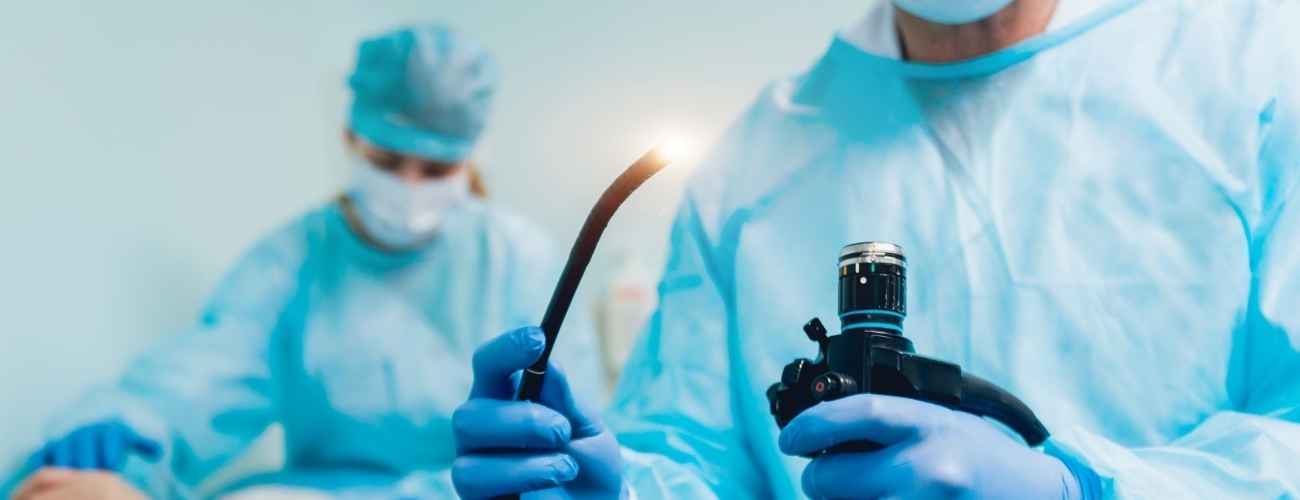
Endoscopic Prostate Surgery
Endoscopic prostate surgery is a method applied in cases of benign prostate enlargement and is the fastest and most definitive solution to urinary difficulties.
The target group for this surgery includes individuals who have not benefited from drug treatments and patients with urinary bleeding and frequently recurring infections caused by prostate enlargement.
This method is related to prostate size. The European Urology Association’s guidelines recommend it for patients with a prostate size up to 80g, but it can also be applied in slightly larger prostates with technologies such as holmium laser techniques, depending on the surgeon's experience and recent technological advancements.
During the procedure, the urethra, the urinary canal, is used to access the prostate directly. The part of the prostate blocking the urinary canal is removed to open the canal, allowing the patient to urinate more comfortably. The surgery typically lasts about 1 hour and is performed under general or spinal anesthesia.
What is Endoscopic Prostate Surgery? Prostate surgery is a method used when drug treatment for benign prostate enlargement is insufficient or unsuccessful.
Benign prostate enlargement can cause numerous problems affecting daily life, such as frequent urination, difficulty urinating, interrupted urination, inability to hold urine, and pain. When none of the treatments are effective, surgery is preferred at this stage.
The surgery involves inserting a camera system into the urinary canal, where electrical tools are used to cut and scrape the prostate tissue. Small fragments collected in the bladder are removed at the end of the operation.
These fragments are sent to a laboratory for final examination. After the scraping procedure, any bleeding areas in the prostate are controlled, and the patient is monitored.
How is Endoscopic Prostate Surgery Performed in İzmir?
- Procedure Details:
- Operation: Endoscopic Prostate Surgery
- Procedure: A closed procedure using a camera to remove the enlarged portion of the prostate.
- Duration: 1 Hour
- Hospital Stay: 1-2 Days
- Anesthesia: Spinal Anesthesia
- Recovery Time: 2-3 Days
- Return to Work/School: 7-10 Days
- Scarring: None
- Pain Duration: 24-48 Hours
In the operation, a camera system is inserted into the urinary canal, where electric cutting tools are used to remove the tissue. The small fragments in the bladder are collected and discarded. These pieces are sent for final lab analysis. After scraping, any bleeding spots in the prostate are controlled, and the patient is observed. This surgery resolves prostate problems.
Post-surgery, the patient will remain in the hospital for 1 to 2 days. While the patient can resume daily activities in a few days, the full recovery time can vary.
Given its sensitivity, the patient should follow the doctor's instructions closely. After surgery, a catheter is inserted to help the patient urinate comfortably and to maintain sterility.
The patient can stand up comfortably the day after surgery. This surgery does not have many side effects. It does not negatively affect sexual function because it does not damage nerves related to sexual functions.
The catheter is typically removed 1-2 days after surgery. Temporary burning or discomfort while urinating may occur in the early stages, but these symptoms improve quickly.
Advantages of Endoscopic Prostate Surgery Endoscopic surgery, also known as minimally invasive prostate surgery, offers several advantages over open surgery. These include less blood loss, fewer complications, shorter hospital stays, and faster recovery.
Additionally, because the affected tissue is removed more precisely in endoscopic surgery, surrounding healthy tissue can be better preserved, reducing the risk of erectile dysfunction and urinary incontinence. Endoscopic surgery also allows for a smaller incision, less scarring, and less pain, which can lead to better aesthetic results.
Compared to traditional surgery, endoscopic surgery has the advantage of detecting and removing cancer early.
What You Need to Know About Endoscopic Prostate Surgery The prostate is located just at the exit of the bladder, and it can enlarge with age, causing difficulty in urination.
Patients with urinary difficulties should be carefully evaluated by a urologist to differentiate between benign and malignant prostate diseases.
Patients diagnosed with benign prostate enlargement (BPH) should first try medication, but surgery may be considered for those who do not benefit from medication or those who have continued bleeding, infections, or bladder stones.
According to the European Urology Association’s guidelines, endoscopic (closed) treatment is recommended for prostates smaller than 80g.
During endoscopic treatment for Benign Prostate Hyperplasia (BPH), only the part of the prostate that grows and blocks the urinary canal is removed. The entire prostate is not removed.
Various energy sources can be used in endoscopic prostate surgery. Standard energy techniques that have been used for years can still be applied, but newer laser technologies may also be used. Both methods do not show any significant superiority over each other.
Other methods, such as vaporization, are also available as alternative techniques for endoscopic prostate surgery.
After surgery, a catheter is inserted, and depending on the situation, it may stay in for 1-3 days.
In the early stages after surgery, bleeding is the most significant concern and may require further intervention.
After surgery, temporary symptoms such as burning or discomfort while urinating can occur, and these may last up to a month.
Some patients may experience rare complications such as erectile dysfunction or urinary incontinence after endoscopic prostatectomy.
After surgery, patients should avoid constipation, spicy foods, and take care to rest. They should avoid sitting for long periods, strenuous activities, and heavy lifting.
Who is Suitable for Endoscopic (Closed) Prostate Surgery? Endoscopic prostate surgery is suitable for patients who have not benefited from medication for prostate enlargement, those who experience frequent urinary tract infections, significant blood in their urine, bladder stones caused by prostate enlargement, and those with kidney failure due to urine retention.
The surgery involves entering the urinary canal with metal instruments (resectoscope) and using a camera to remove the portion of the prostate that is causing the symptoms. Laser techniques can also be used for larger prostates, but the procedure is generally recommended for prostates smaller than 80g according to European Urology Association guidelines. The typical hospital stay is 1 day, and the catheter is usually removed 1-3 days after surgery.
What are the Prices for Endoscopic Prostate Surgery in İzmir? Endoscopic prostate surgery is performed when medication is insufficient or unsuccessful in treating benign prostate enlargement.
In İzmir, if you want to get information about the prices for endoscopic prostate surgery, you can consult with expert doctors in the field.
Frequently Asked Questions:
-
What is Endoscopic Prostate Surgery? Endoscopic prostate surgery is the fastest and most definitive solution for urinary difficulties caused by benign prostate enlargement. The procedure is done through the urinary canal, and it involves removing the inner portion of the prostate that is blocking the canal. It can be performed using either a traditional cutting method or a bipolar method, which also controls bleeding.
-
How is Prostate Endoscopy Done? Prostate endoscopy, also known as TUR-prostate, is the standard method for removing the prostate gland. It is done without any external incisions. A camera-equipped device is inserted into the urinary canal to remove the prostate in small pieces. The procedure is done under spinal or general anesthesia, and a catheter is placed after the surgery.
Sources: Ünal Sert, D., & Kılıç, Ö. BPH’da endoskopik cerrahi tedavi.

Social Media